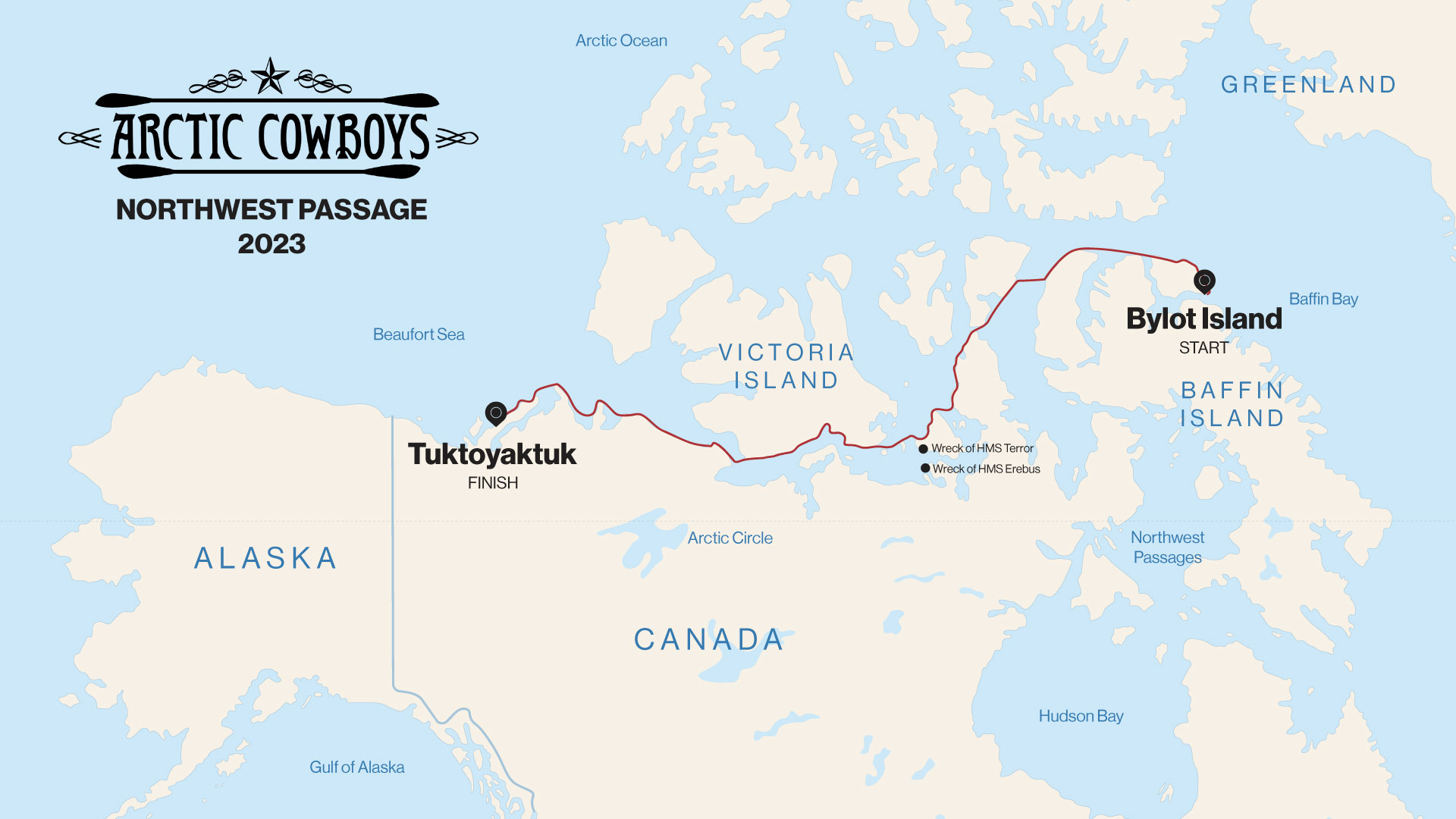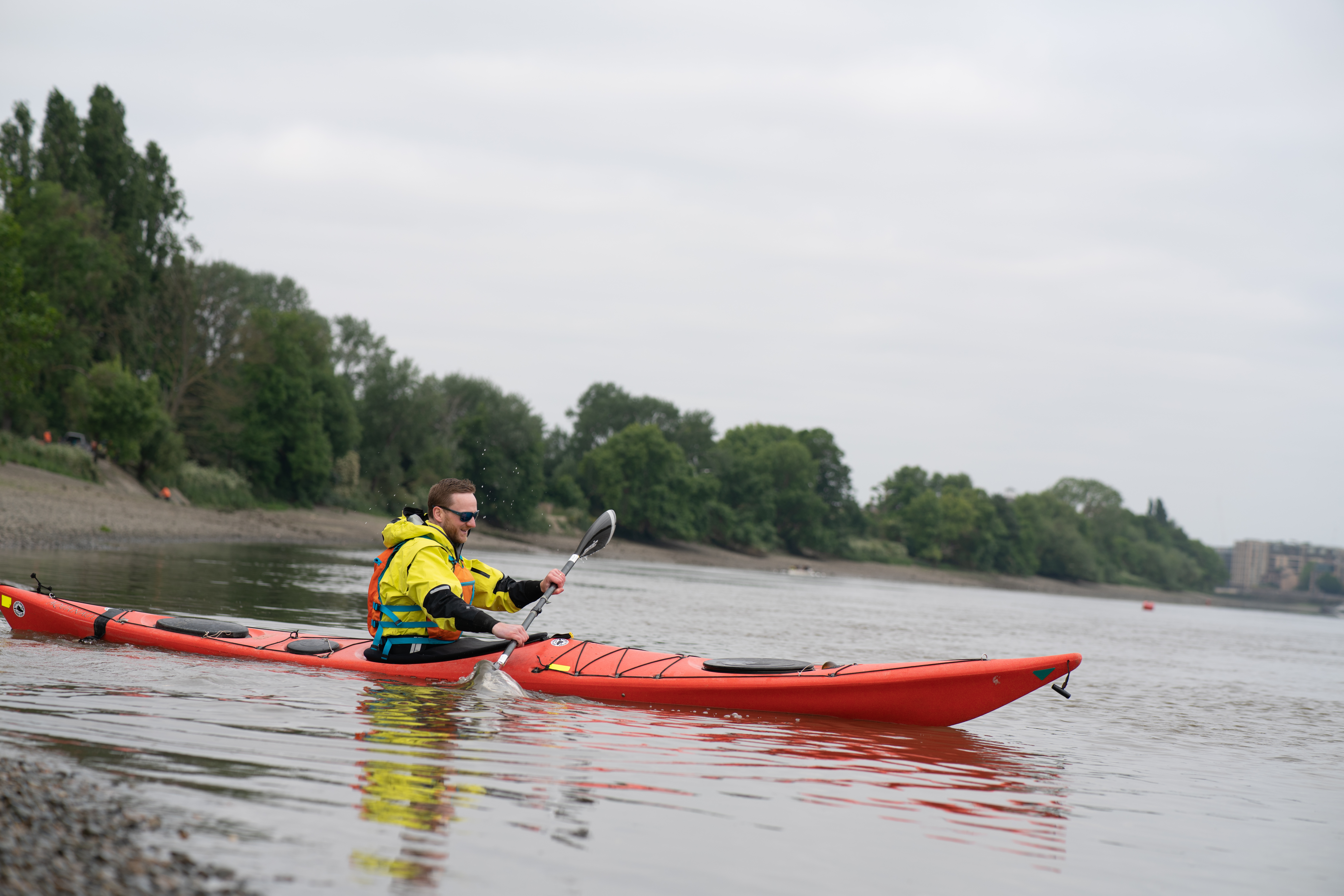
Scots adventurer to attempt record-breaking kayaking voyage in Arctic
The Arctic’s Northwest Passage is steeped in mystery and tragedy. The beguiling sea route, which connects Europe to Asia, has claimed the lives of many of those brave enough to have attempted it.
Weaving amongst the hostile Canadian arctic archipelagos over the top of the world, it has captured the imagination of Europe’s foremost explorers – Christopher Columbus, Roald Amundsen and the doomed Sir John Franklin.
But now Scots adventurer Mark Agnew is gearing up to attempt the record-breaking 2,000 mile kayaking voyage, in a bid to become one of the first people to complete it.
On 1 July, Mark and his team of three other Arctic Cowboys, will set off from Bylot Island, Nunavut, Canada, and hope to finish 90 days later at Tuktoyaktuk, an Inuit hamlet in Canada.
The route will follow that of Sir John Franklin’s doomed voyage in 1845.
But 178 years later, the Arctic’s ice conditions have changed with global warming, making the journey only possible as the sea ice melts and disappears.
‘The idea began to take root in 2016 when the receding ice around the North of Canada and Greenland started to hit the news,’ says dad-of-one Mark from Edinburgh.
‘It was then that I started to try and work out how it would be possible.’

The two double man, 23 foot fiberglass sea kayaks, have been reinforced to cope with the rigours of the trip.
Fully packed with 90 days of food and water the kayaks will weigh close to 200kg each when fully loaded.
The kayaks will contain repair kits for the boats, spare paddles, tents, rations and all the things you might need to survive for 90 days in the Arctic.
Mark is an experienced kayaker but he has never done anything of this scale.
His previous expeditions have included week long excursions around Hong Kong and the surrounding islands, paddling from Cornwall to the Scilly isles and a circumnavigation of Mull.
In 2016, he attempted to set the world record for rowing across the Atlantic twice, but didn’t successfully cross the ocean.
‘A kayak is significantly more manoeuvrable than an ocean rowing boat and you feel much closer to the environments that you pass through,’ Mark said.
‘This lack of barrier between you and the ocean also serves to heighten your feeling of precariousness.
‘Large ocean going rowing boats are a much safer and a more stable beast on high seas, they have a cabin and can self right in the event that you do go over.’
If the expedition is to successfully make it to their finishing point within the summer season and before the arctic ocean begins to freeze, they will need to cover around 22 miles a day.
But Mark’s failed attempts at rowing across the Atlantic has shaped his outlook on the adventure.

Mark Agnew. Credit: Matt Jones
‘I think it is unhealthy to become too focused on a world first or on the competition with other teams attempting to achieve similar things,’ he said.
‘There is enough adventure to go around.
‘I now try and operate on an intrinsic experience based success metric rather than such a quantitative one.
‘Rather than being obsessed with making it to Tuktoyaktuk, the end of our planned trip, and considering it a failure if we don’t get that far I will base my measure of success on the experience and the camaraderie.’
The group hopes to paddle for 12-14 hours a day, but could keep going for up to 30 when they get the chance.
‘Our route will be largely hugging the land, threading a path through the islands of northern Canada,’ said Mark.
‘Although it will be summer and we will be bathed in 24 hour sunlight there will still be the risk of icebergs to contend with and the water will be hovering around zero degrees Celsius.
‘The most technically challenging part of the trip will come approximately 500 miles in – The Prince Regent Inlet.
‘This will require an exposed 40 mile crossing where we will lose sight of land in a boat barely wider than our own hips.
‘We are going to aim for 12-14 hour days paddling on the water.
‘However if the conditions are good and we have the chance to really get the hammer down we may keep going for 30 hours or as long as we can to insure against setbacks when the conditions are not so favourable.
‘If there is a storm and we are confined to land we will have kindles and a chess set to keep us entertained although it will be very frustrating but you can’t fight the weather.
‘We will be wearing dry suits the whole time if you fall in without one, it is immediately a life threatening situation.’
Mark hopes to raise more than £25,000 for Wilderness Foundation UK,
To donate visit – https://www.gofundme.com/f/northwest-passage-the-arctic-cowboys?utm_medium=referral&utm_source=widget&utm_campaign=p_cp%2Bshare-sheet
Read more on Scottish Field’s Outdoors pages.
Plus, don’t miss the July issue of Scottish Field magazine.
TAGS

